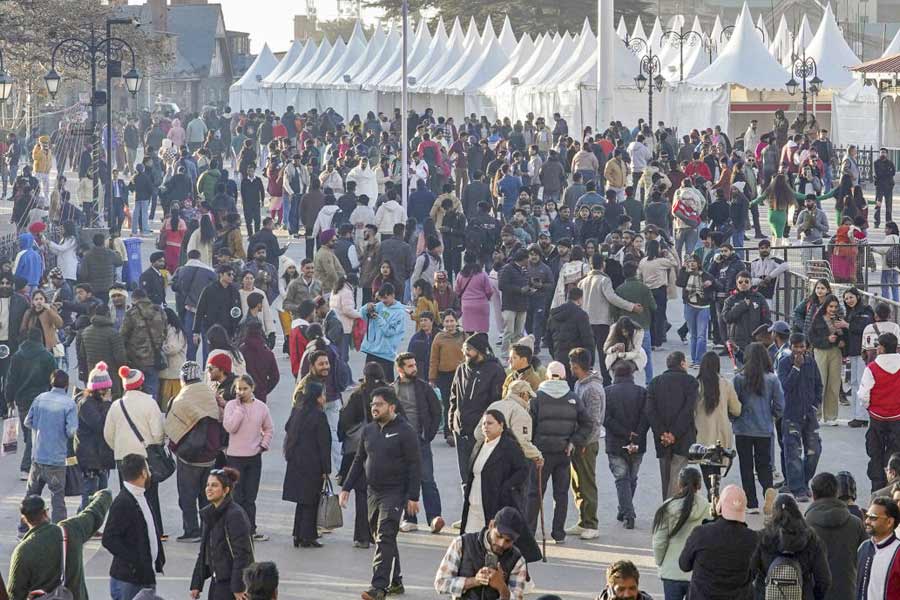In another time and another age, when the Academy of Fine Arts reigned supreme over the national culture scene, its annual show created waves all over the country, attracting the leading lights of those times. One does not need to wear rose-tinted glasses of nostalgia to look back at that period of Calcutta in wide-eyed wonder.
Now these annual shows have become routine exercises and one is as good as another. Emami Art has joined the fray and Imaginarium 2.0 is “the annual open call, awards and exhibition for upcoming artistic talent. This time, 10 talented young art practitioners have been selected from more than 200 applicants across the country,” according to the press release. This is the second such effort. The three awardees were Ali Akbar PN, Sudhir Ambasana and Puja Mondal, in that order. Although the “participants have been selected by an eminent panel of jury”, all participants may take heart from the fact that this is a process often dictated by personal likes and dislikes. This is not, necessarily, the last word on the participants’ talents — or lack thereof — in case they did not make it. It all depends on how an artist evolves in future.
By the way, the obscurity of the passage seeking to explain the art of the awardees in the press note is quite astounding. It is written in an abstruse language that evades comprehension and passes like sand through one’s fingers.
The exhibition held no surprises but the pall of gloom that was noticeable in the works of many artists during the lockdown has lifted at last. If there was a single element for which Ali Akbar PN’s works stood out, it was for their complex and captivating texture built up with multiple layers of acrylic, oil pastel and charcoal. His dark human figures arranged in enigmatic juxtapositions suggested a range of situations but did not give away the story (picture). Sudhir Ambasana is an architectural designer and a digital artist. His experiments with chronophotography, harking back to the Victorian era, could have been Seurat’s ‘points’ caught in a series of balletic motions. Puja Mondal’s watercolours on rice paper were the very picture of decay and corruption, however idyllic the settings might have been. Dhaivat Shah uses his interest in photography to question and explore the relationship between nature and human beings. His archival prints of landscapes marked with manual cut marks displayed on light boxes signify his interventions.
Priti Roy conjures up fragments of pre-immigration memories that could be personal or she could have dipped into the collective pool. It doesn’t matter whether she has the Partition or migrant workers in mind, she drives home her point sans sentimentality. But the embroidered piece is too much of a cliché. The rural and the urban are at loggerheads in Gyanwant Yadav’s exercises in what can be described as imaginary cartography. One has to scrutinise the details in his works for the most insignificant looking marks that add to the story. Never one for stylistic flourishes, he exercises remarkable control.
Priyaranjan Purkait uses textiles of a wide variety of textures and weaves to create multifarious contrasts that go beyond their material use. Subhankar Chakraborty’s beautiful bird’s-eyeview landscapes are perfect examples of nature recollected in tranquility. He zooms in and out with equal ease.










